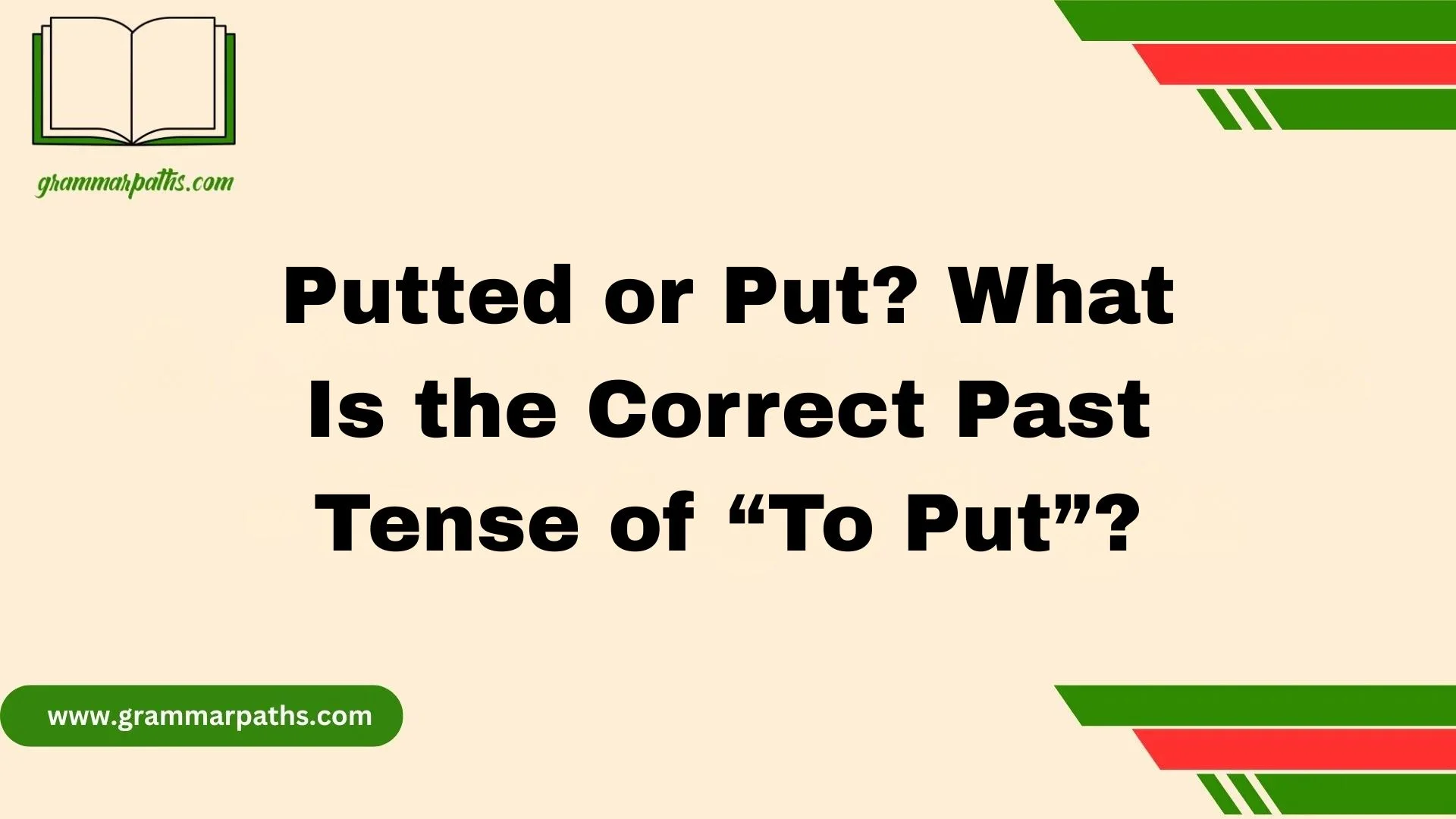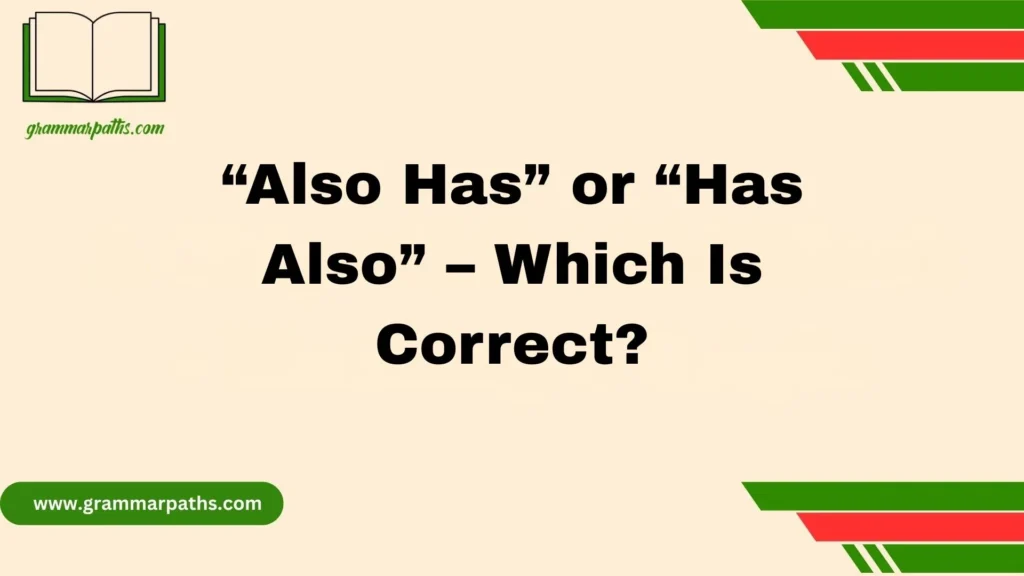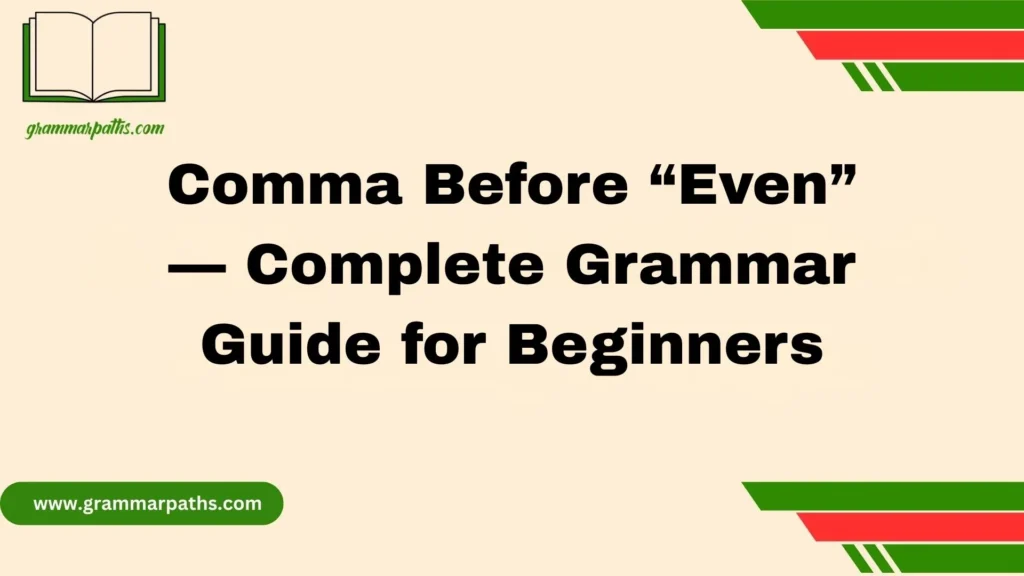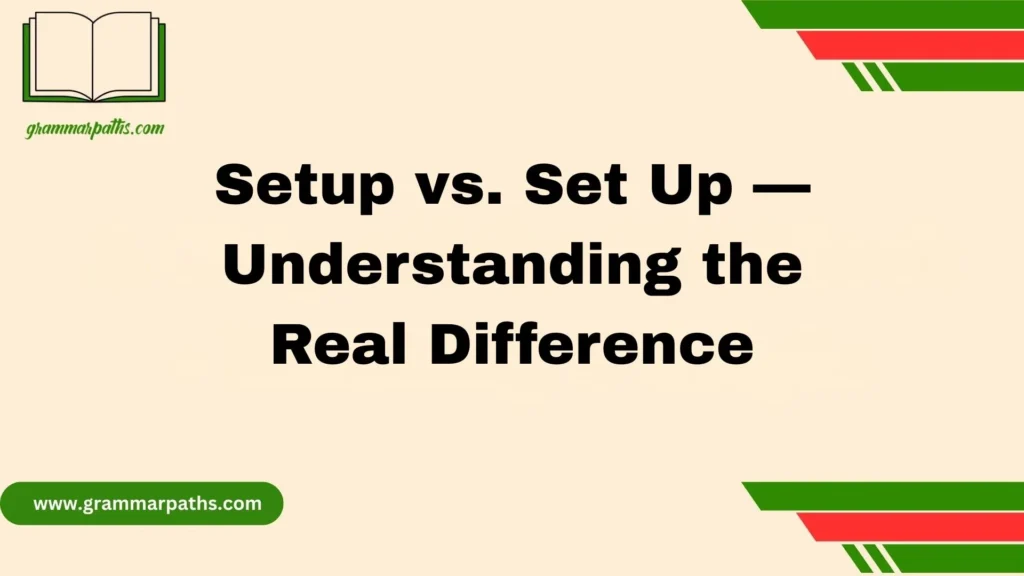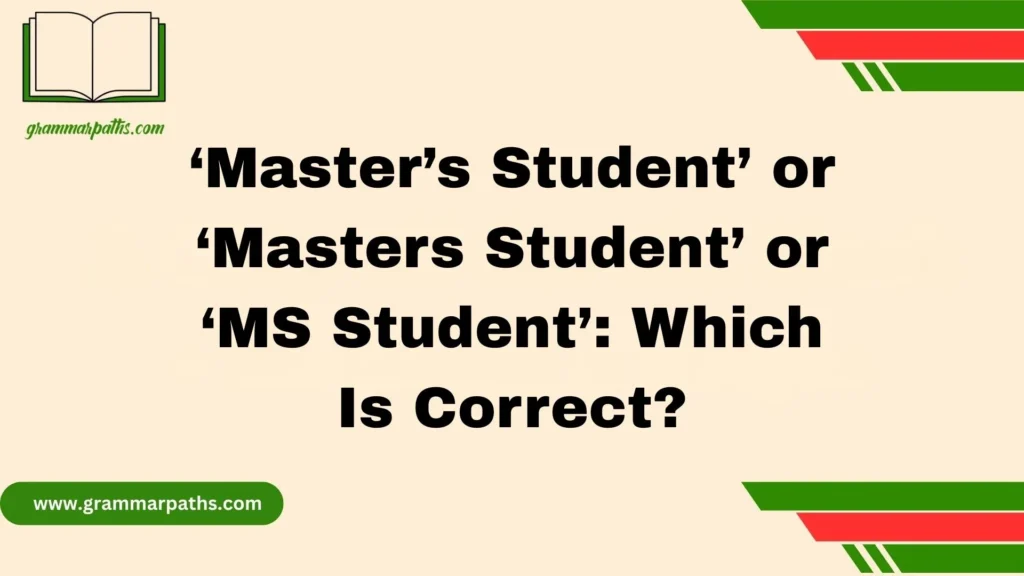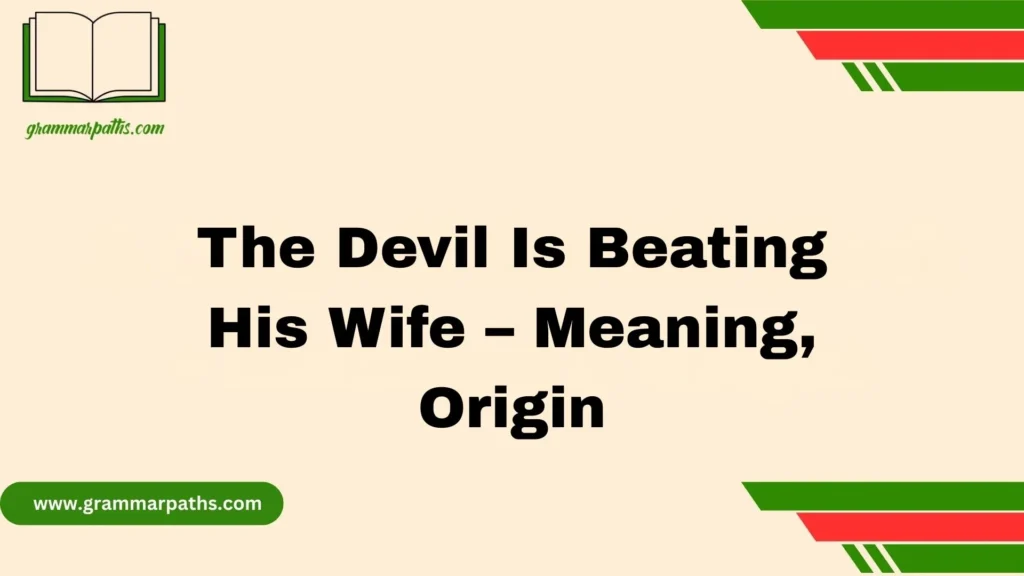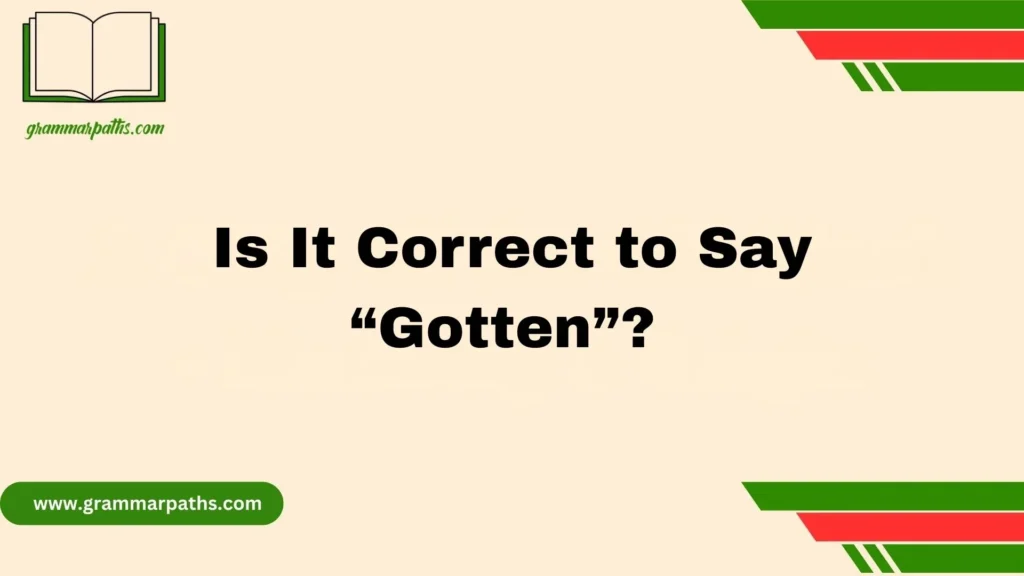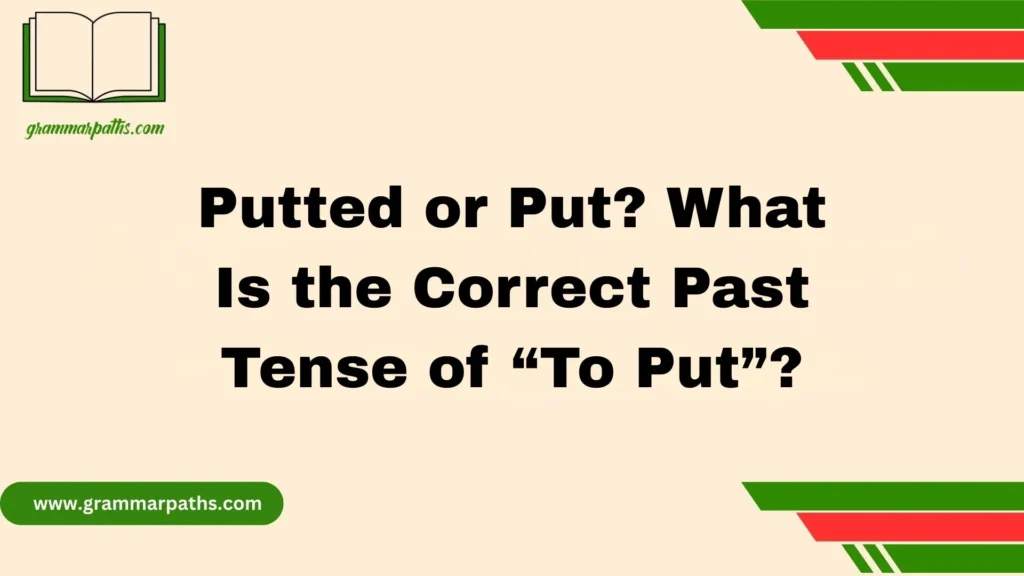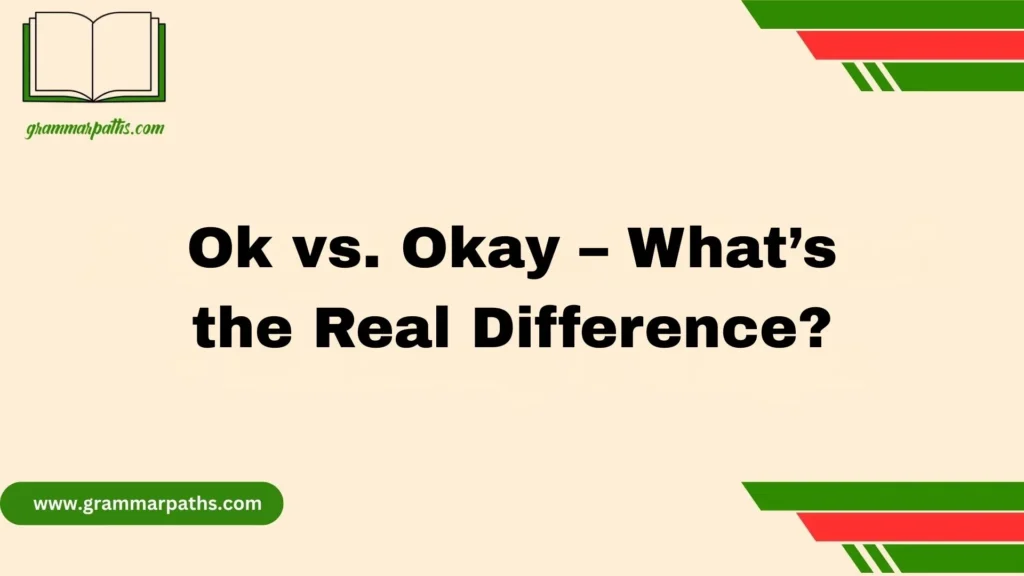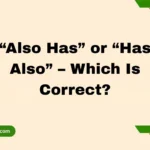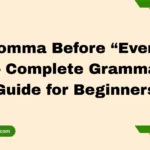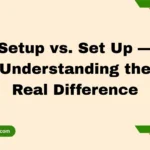The confusion between “Putted” and “Put” is one of those tricky grammar moments that make English both fascinating and frustrating. Many people wonder which form is correct — is it putted or put? The answer depends entirely on context and meaning. The verb “put” is irregular, meaning it doesn’t follow the typical “-ed” pattern for the past tense. Therefore, the correct past tense of “put” is simply “put”, not putted.
For example, you’d say, “He put the book on the table,” not “He putted the book on the table.” However, there’s an exception — in the sport of golf, the word “putted” is absolutely correct because it comes from the noun “putt”, meaning a gentle stroke to roll the ball into the hole. So, “She putted perfectly on the green” is correct.
Understanding the difference between put vs. putted, put past tense, and put grammar rules helps improve both writing and speaking accuracy. Whether you’re learning English or polishing your grammar skills, knowing when to use putted or put can make your sentences clearer and more professional.
The Quick Answer: It’s Always “Put,” Not “Putted”
Let’s get this straight right from the start. In standard English, the correct past tense of “to put” is simply “put.”
Unlike most verbs, put doesn’t change form in the past or past participle. Whether you’re talking about yesterday, today, or tomorrow, put stays exactly the same.
Examples:
- Present tense: I put my phone on the desk.
- Past tense: Yesterday, I put my phone on the desk.
- Past participle: I have put my phone on the desk many times.
Notice how the verb never changes. You don’t say putted, puttinged, or puts for past actions — put does it all.
So why do people say putted sometimes? Because there’s one small exception — in golf.
When “Putted” Is Actually Correct — The Golf Exception
Here’s where the confusion begins. In golf, the verb to putt (with two t’s) means to strike a ball lightly with a putter, usually on the green. It’s a completely different verb, even though it sounds almost identical to put.
So yes, “putted” is a real word, but it only applies to golf.
Examples:
- He putted the ball perfectly into the hole.
- She has putted better than ever this season.
Let’s compare the two clearly:
| Verb | Meaning | Correct Past Tense | Example Sentence |
| Put | To place, set, or position something | Put | I put the groceries away. |
| Putt | To hit a golf ball with a putter | Putted | She putted the ball into the cup. |
In short:
- Everyday use → Put
- Golf use → Putted
So next time someone corrects you on the course, they might actually be right!
Understanding Irregular Verbs: Why “Put” Doesn’t Change
English verbs fall into two broad categories: regular and irregular.
- Regular verbs form their past tense by adding –ed, like walk → walked or clean → cleaned.
- Irregular verbs, however, don’t follow this pattern. Their past tense often looks different, or sometimes doesn’t change at all.
The verb put belongs to that special second group. It’s an irregular verb that keeps the same form across all tenses — present, past, and past participle.
Here are some similar verbs that work the same way:
| Base Form | Past Tense | Past Participle |
| Put | Put | Put |
| Cut | Cut | Cut |
| Set | Set | Set |
| Shut | Shut | Shut |
| Let | Let | Let |
| Spread | Spread | Spread |
Each of these verbs remains unchanged in the past tense, which makes them both simple and confusing at the same time.
When language learners first encounter put, they expect to see putted because they’ve learned that most verbs follow the –ed pattern. But English loves to break its own rules — especially with high-frequency words.
Grammar Deep Dive: Conjugating “Put” Across All Tenses
Let’s explore how put behaves in every tense. This quick-reference table shows how versatile and consistent this verb truly is:
| Tense | Example Sentence |
| Present Simple | I put the milk in the fridge. |
| Past Simple | I put the milk in the fridge yesterday. |
| Future Simple | I will put the milk in the fridge later. |
| Present Continuous | I am putting the milk in the fridge now. |
| Past Continuous | I was putting the milk in the fridge when you called. |
| Present Perfect | I have put the milk in the fridge already. |
| Past Perfect | I had put the milk in the fridge before you arrived. |
| Future Perfect | I will have put the milk in the fridge by noon. |
Notice that put remains put in all perfect and simple forms — only the continuous tenses use putting because of the –ing ending.
Why Learners Often Say “Putted” by Mistake
It’s not hard to see why people get this wrong. The English language is full of verbs that end with –ed in the past tense, so naturally, learners want to apply the same rule everywhere.
Here’s what usually happens:
- A learner hears “putted” in a golf context.
- They assume it’s the general past tense of put.
- They start saying putted the book or putted the keys — which sounds logical but is incorrect.
Reasons for confusion:
- The sound of put and putt is nearly identical.
- Regular verbs dominate English grammar, so irregular ones feel “wrong.”
- There’s little visual difference between put and putted, making errors easy to miss.
Memory tip:
Think of this phrase — “You cut, you cut, and you have cut — no changes needed.”
Now replace cut with put and you’ll never forget it:
“You put, you put, and you have put.”
Analogy:
If you wouldn’t say cutted or shutted, don’t say putted (unless you’re golfing).
How “Put” Works in Common Idioms and Phrasal Verbs
English speakers love using put in idioms and phrasal verbs. These phrases give put a wide range of meanings that go far beyond simply “placing” something.
Here are some of the most common:
| Expression | Meaning | Example Sentence |
| Put up with | Tolerate | I can’t put up with this noise any longer. |
| Put off | Postpone or delay | We put off the meeting until Monday. |
| Put away | Store or clean up | Please put away your clothes. |
| Put together | Assemble or organize | She put together a strong presentation. |
| Put out | Extinguish or inconvenience | The firefighters put out the blaze. |
| Put through | Connect or make endure | I’ll put you through to the manager. |
| Put across | Communicate clearly | He put across his ideas very well. |
| Put down | Insult or record something | Don’t put yourself down — you did great! |
Notice that in every example, the verb put stays the same in past tense:
- He put off the meeting.
- They put together a plan.
Never putted off or putted together — those forms don’t exist.
The Etymology: How “Put” Evolved from Old English
The history of put is older than it looks. The word comes from Old English “putian”, meaning to thrust, push, or place. Over centuries, the pronunciation and spelling simplified, but its core meaning — to place something — stayed the same.
During the Middle English period (roughly 1100–1500 AD), put became common in both spoken and written English. Its irregular form stuck because speakers used it constantly, and language tends to preserve words that are short and frequently used.
Timeline Snapshot:
- Old English (before 1100): putian — to thrust.
- Middle English (1100–1500): puten — to place or set.
- Modern English (1500–present): put — to place, apply, or express.
Interestingly, put replaced several older verbs that once served similar roles, which helped cement it as a core English verb.
Case Study: What Dictionaries and Experts Say About “Put”
To confirm the rule, let’s look at authoritative sources.
- Merriam-Webster defines put as “to place something in a particular position,” with past tense: put.
View source- Oxford English Dictionary (OED) lists put as an irregular verb with no change between present and past.
View OED entry- Cambridge Dictionary also identifies put as both the base and past form, with putted marked as the past of putt (golf).
See Cambridge entry
Even linguistic corpora such as the Corpus of Contemporary American English (COCA) show that “putted” is extremely rare outside golf contexts, while “put” appears millions of times across all tenses and contexts.
“Irregular verbs like put tend to resist regularization because of their frequency in everyday language.” — Linguist David Crystal
That frequency explains why put has stayed unchanged for centuries.
Common Mistakes and How to Avoid Them
Here are some frequent errors and how to correct them:
| Incorrect | Correct | Explanation |
| ❌ I putted my phone on the charger. | ✅ I put my phone on the charger. | Put never changes. |
| ❌ She has putted her clothes in the drawer. | ✅ She has put her clothes in the drawer. | Past participle = put, not putted. |
| ❌ They are putted the chairs away. | ✅ They are putting the chairs away. | Use putting for continuous tense. |
Tips to avoid confusion:
- Say it aloud: if it sounds odd, it probably is.
- Associate putted only with golf.
- Review similar verbs (cut, shut, let) — all behave the same way.
- Practice by writing short sentences using put in different tenses.
Fun Facts About “Put” You Probably Didn’t Know
- “Put” ranks among the top 100 most used English words according to language frequency lists.
- It’s one of the shortest verbs in English yet carries dozens of meanings.
- English speakers use put in over 200 idioms and phrasal verbs.
- In Shakespeare’s works, put appears more than 1,200 times, often expressing emotion, action, or command.
- The average English speaker says or hears the word put multiple times every day — at home, work, or play.
Example in pop culture:
In Mary Poppins, the line “Spit spot, put it away!” shows just how naturally the verb fits in everyday conversation.
Conclusion
In short, the difference between “putted” and “put” depends on how the word is used. When you’re talking about placing or setting something, the correct word is always “put” — it never changes, whether in present, past, or past participle form. But in golf terminology, where “putt” refers to a soft stroke of the ball, “putted” is the correct past tense. So, remember this simple rule:
FAQs
1. Is “putted” ever grammatically correct?
Yes. “Putted” is only correct when referring to the action of striking a golf ball with a putter.
2. What is the past tense of “put”?
The past tense of “put” is “put” — it doesn’t change form.
3. Can I say “I have putted the book there”?
No. That’s incorrect unless you’re talking about golf. The correct sentence is “I have put the book there.”
4. Why doesn’t “put” change in past tense?
Because “put” is an irregular verb — it keeps the same form in present, past, and past participle tenses.
5. What’s the difference between “put” and “putted”?
“Put” means to place something somewhere, while “putted” is only used in golf to describe hitting the ball gently toward the hole.

Mia Rose is the passionate writer and founder of GrammarPaths.com, a resource dedicated to helping learners master English grammar, idioms, and writing skills with ease. With a deep love for language and years of experience in teaching and content creation, Mia simplifies complex grammar rules into clear, practical guides that readers can instantly apply.
